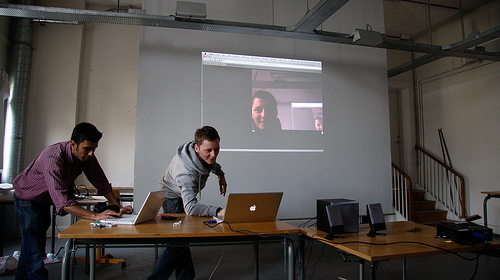These days, most companies provide their project managers with onsite training to help them become better leaders in the workplace. With so many businesses investing in their project management training resources, the training world’s getting competitive! As a business, you probably want to know that your team leaders (and their teams) are getting the best and most updated training methods and technologies around.
To give your teams and their managers a competitive edge, here’s a shortlist of tips to keep in mind as you develop your project management training program.
Know your goals, prioritize objectives
Image via Flickr by denn
Before you can create an effective training program, outline your objectives, priorities, and agree upon your end goals. To start, have a meeting with the group that’s leading the training initiative, and brainstorm on the skills your managers and employees would most benefit from (leading teams, leveraging technology, risk management). From here, you can start outlining training courses that fulfill your objectives, and reach your intended goal(s).
Diversify those teaching styles
Image via Flickr by tobiastoft
We’ve all heard that people have different learning styles: visual, verbal/non-verbal, auditory and kinesthetic, or hands-on. This means some individuals will absorb their training best by listening to a presentation, others by participating in group activities and actually doing the tasks, and some will thrive with a combination of reading a lesson, and then working it out with a team. Consider using multi-module techniques to reach all of these learning styles. Otherwise, you could find that half of your team has missed the point of the training.
One way to reach a combination of these sensory learning styles is to use a slideshow with images and charts, and text, and then roll in activities that bring the theories together. Try to make an entertaining program that explains concepts well in a variety of ways.
Unify Your Customer Service Team
Image via Flickr by Dell’s Official Flickr Page
If you have a customer service team, give your training program a unified marketing strategy that helps everyone on that team project a consistent company personality. Write up sample scripts that illustrate some great ways to handle a variety of customer situations and challenges. And, give them some samples of responses that don’t fit your company’s tone. Discuss, show, share, simulate and practice. Make room for levity—studies have proven that the more fun people have, the better they learn.
The point being: You might not think of your customer service team as a part of your company’s marketing team, but they can have similar effects when they interact with clients.
Communicate, communicate, communicate
From the onset, let training participants know why the project management training matters, and what they can expect from the time they put in. Be clear about the objectives during the entire training process—from the first mention of an upcoming training program, to the first day, all the way to the last hour, and day. When you reiterate the objectives, plans and goals throughout the training, it helps people stay focused, as well as regroup and get back on track if there’s been a digression—which happens.
Include communication training that shows how to navigate uncertainty, ambiguity and second guessing among co-workers in the office. For example, some issues are best dealt in person rather than in an email. Also, as our world grows smaller, our businesses are increasingly multi-cultural. This means, one person’s casual slang might be considered someone else’s insult. Weaving in some cultural sensitivity training opens everyone’s eyes—in the best possible ways.










